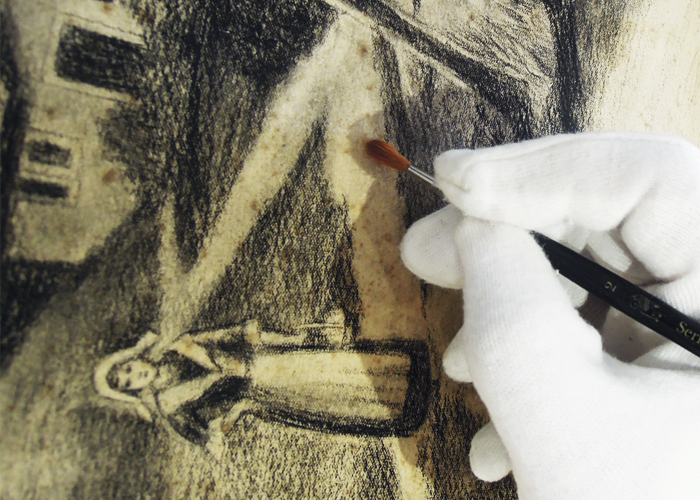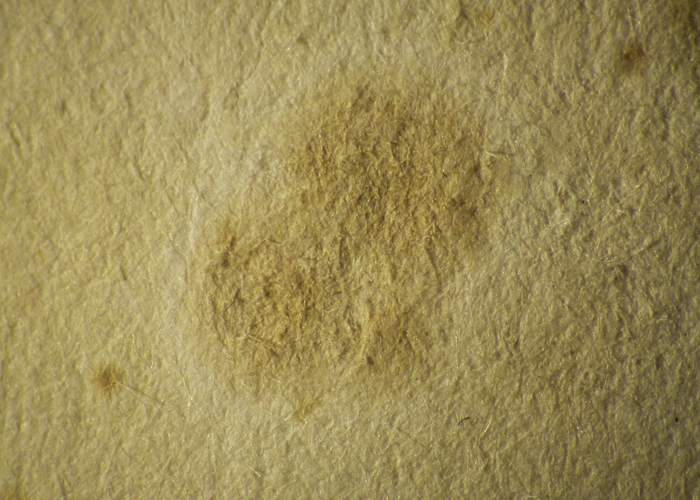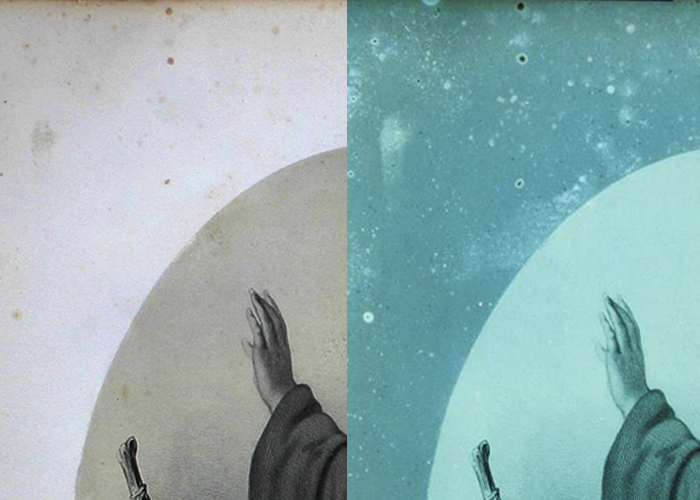Foxing is an informal term used by conservators to describe yellow, black and reddish-brown spots. They are very common on photo albums, books, prints and other collectable items. I have worked on multiple artworks with foxing, such as: Durer’s burins and 20th century charcoal drawings, always with similar brownish colours and “snowflake” shape. Even famous and quality papers like Glaslan or Arches wove paper, used by top artists, are not free of it either!

But, how is it created?
There are many factors that cause foxing: from metallic particles, fungi and impurities on the manufacture to high levels of constant relative humidity.
During the manufacture of paper, small particles from metal equipment or contaminated water are introduced while paper making. Then, these particles of copper and iron catalyse at 70% RH or more, causing localised oxidation, or the way we call it, foxing stains. Luckily, these spots are the easiest to observe, as they have a dark rusty centres with concentric rings.
Unfortunately, when these particles are too big (±1mm) and oxidised, micro perforations are caused. At this point, the best solution is to reduce the oxidation and consolidate the area with Japanese paper.
In contrast, foxing caused by fungi, rarely causes loss on the support. This type of foxing may result from a poor manufacturing process, enhanced by long exposure to high humidity levels or the result of constant poor environment, as fungi loves hygroscopic substrates. The ones I most commonly found are: Aspergillus niger and Aspergillus fumigatus.

During paper manufacturing, thousands of microorganisms take part on the paper making process, and some of them, remain dormant for years until favourable conditions, as high %RH make them activate and proliferate. Traditionally, libraries, private properties and warehouses in the UK, where conservation standards have been difficult to control, a number of conidiospores (fungal spores) travel from one object to another by airflow, infecting other artworks and books.
Also, it has been proved that foxing stains are more acidic than the surrounding, and that by induced amino acids, the paper object is more prone to foxing. Finally, light, has no direct effect on foxing, although it may cause acid hydrolysis and weaken the paper to further attacks.
Foxing can be observed on visible and ultra violet light. And “dormant” foxing is visible on UV, but not visible light.

This topic is on constant evolution by conservators, as its causes are, very often, a mixture of different internal and external factors.